By our third day on the Milford Track, some of the 6,813 mm of average rainfall in this area had caught up to us. The clear skies of the previous day had given way to heavy rain and low cloud. I was glad that I had taken the time the afternoon before to hike up to the top of the pass. The photos below are from my up the pass the previous afternoon.

After leaving the hut after breakfast, we walked a short distance through the forest before the trees started to thin and we reached bush line. As we came out of the shelter of the vegetation the wind started to pick up and the cloud seemed to thicken to the point where we could only see a few metres in front of us.

As we made our way up towards the pass, it was hard to imagine the towering mountains that I knew were surrounding us, we could literally see just a couple of bushes ahead of us by this point. The previous afternoon I had been surrounded by the dramatic rock wall that formed the head of the valley, providing ever-changing views as I made my way up the track towards the saddle.
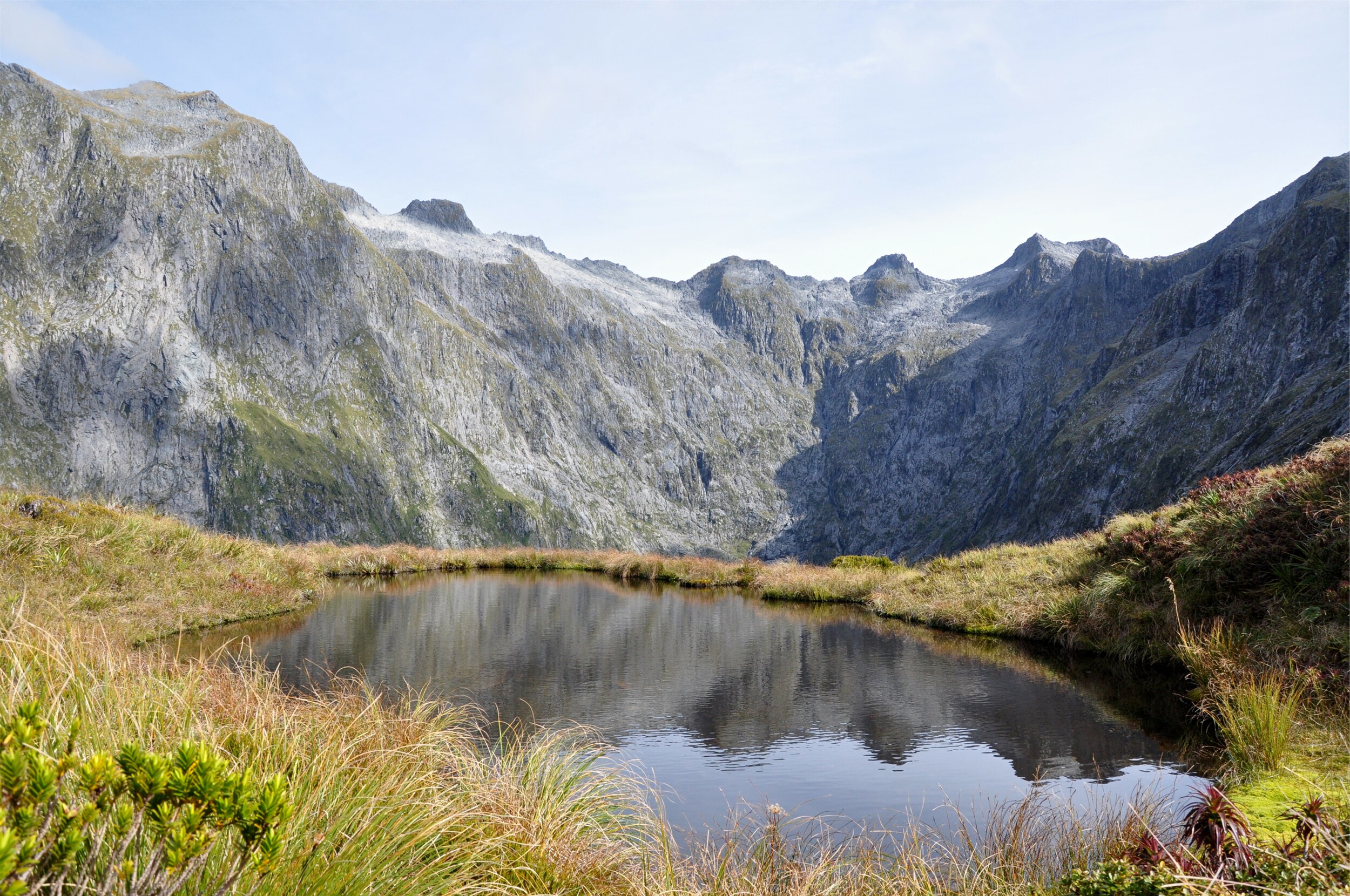
The track climbs through a series of switchbacks before reaching a saddle from where you get the first glimpses of the ‘other side of the mountain’; the Arthur River Valley that we would follow the next day out towards Milford Sound.

This route through the mountains was traditionally used by Maori to transport greenstone. The first European explorers visited the area from the Milford Sound side as early as 1880, but it wasn’t until 1888 that Quintin MacKinnon successfully found a route over the pass to create an overland route from Te Anau to Milford Sound.
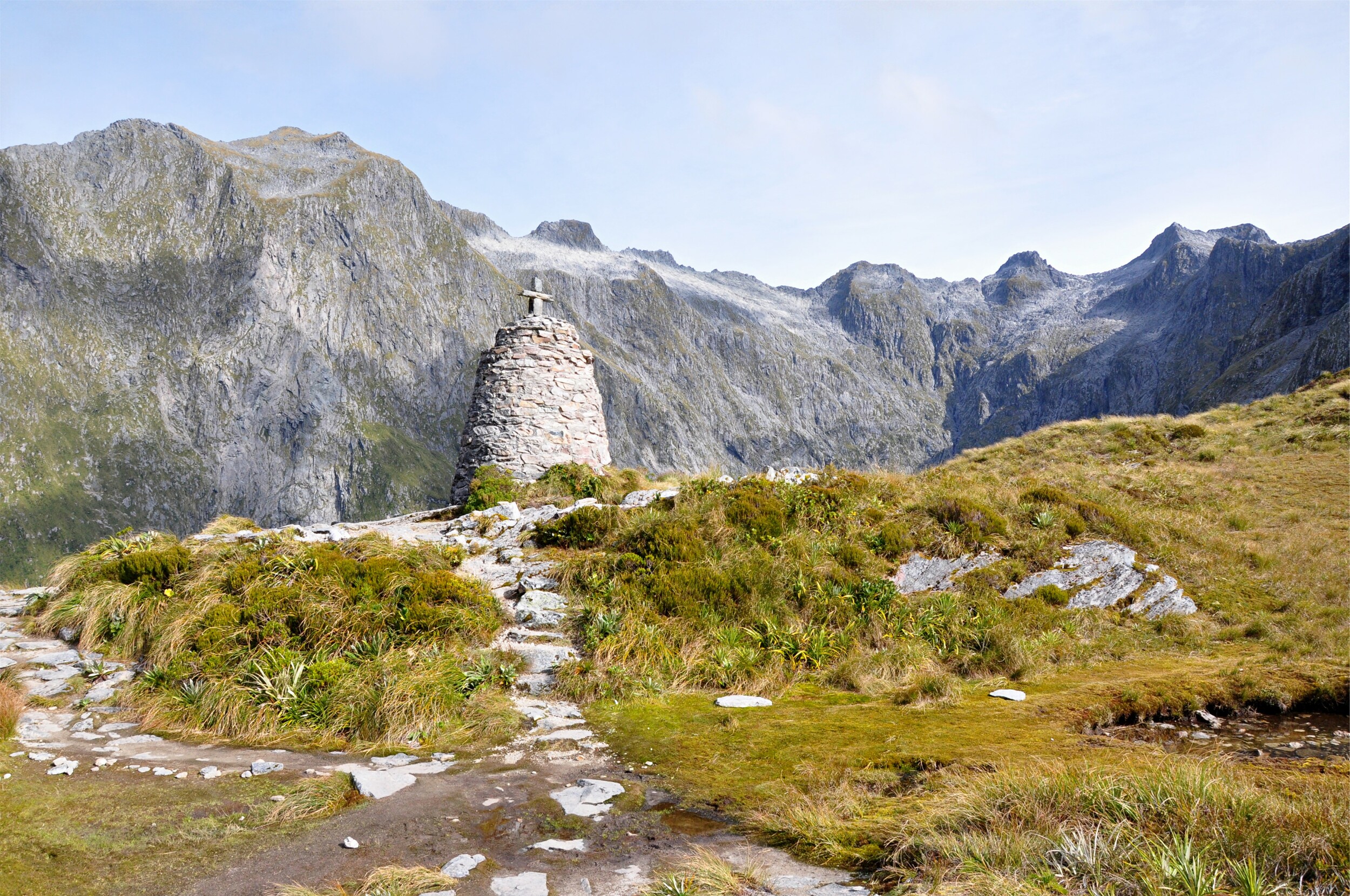
MacKinnon guided walkers along the route that is now the Milford Track, taking them to a hotel in Milford Sound before retracing the route back to Te Anau. Sadly, he only survived a few years after discovering the route and a memorial to him was erected on the top of the pass that still bears his name.
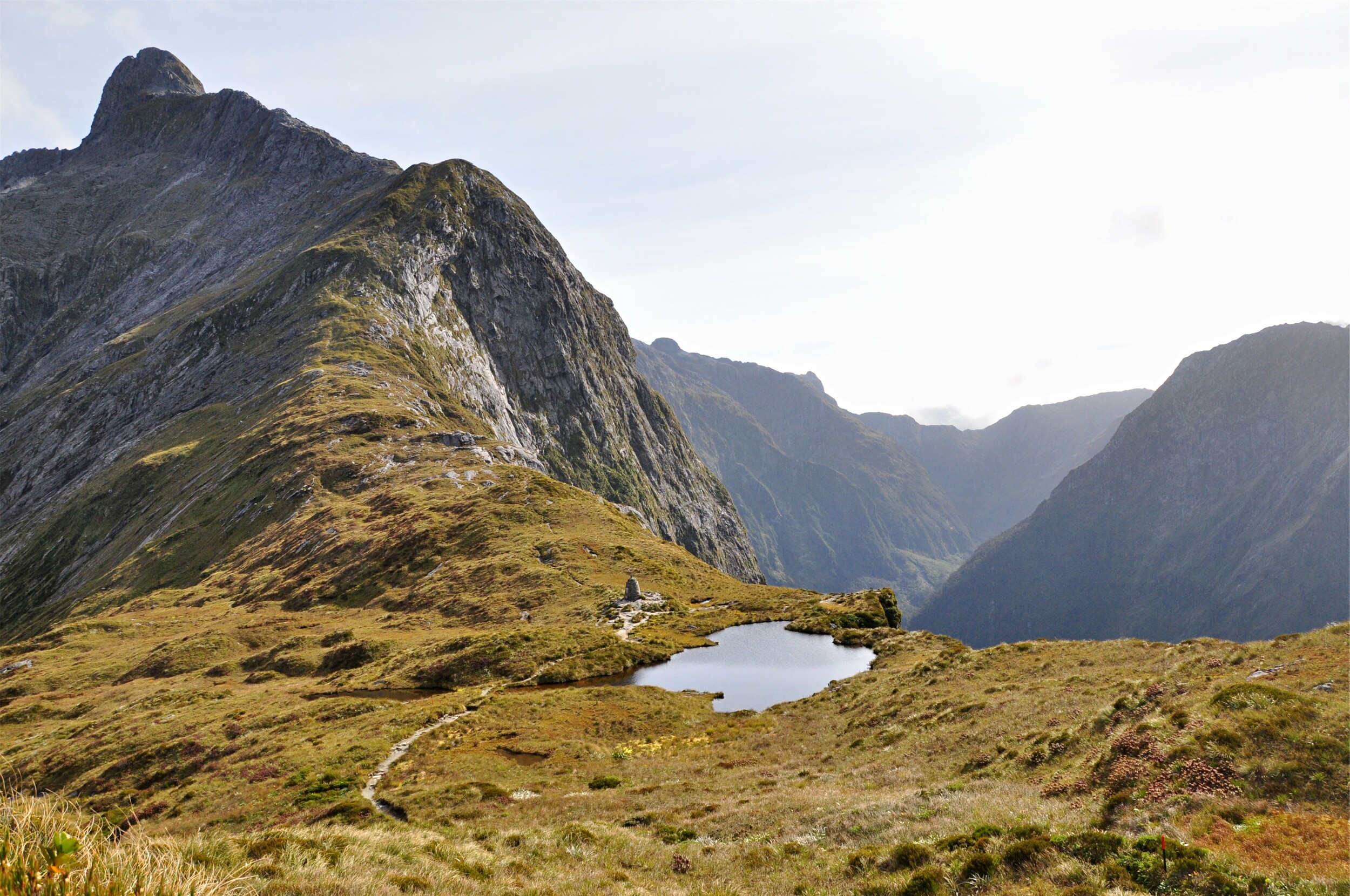
There were early attempts to convert the track into a road and prisoners were bought in to provide labour. However, the lack of equipment, hard rock and numerous escapees, meant that only very slow progress was made and the plan was abandoned.

With the route no longer destined to become a road, it remained a walking track, and for much of it’s early history it was a private trail. Only commercially guided tours had the right to use the track until 1965 when a group of hikers from the Otago Tramping Club set in motion the opening up of the route for independent hikers like us.
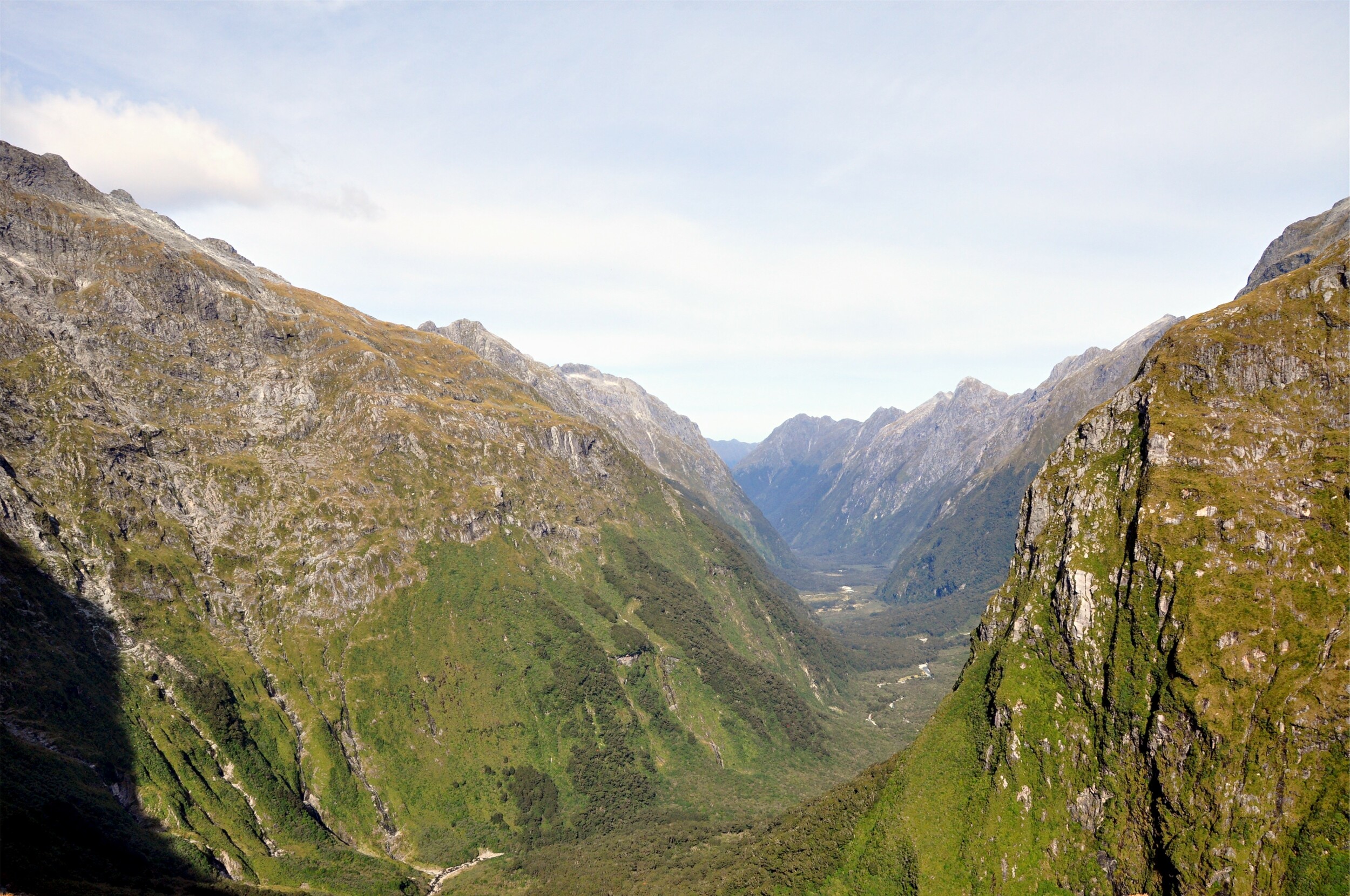
I decided to continue along the ridge towards the shelter that we had seen earlier in the day from the valley floor and was rewarded with views all the way back down the Clinton Valley towards the start of the track. Looking back at the photos it is hard to believe that I was back here less than twenty four hours later being buffeted by driving rain so hard Eric and I both almost lost our balance a couple of times. My plan of following closely behind Eric to try and shelter from the worst of the weather paid off when I was able to snag his rucksack cover when it got blow off in a particularly strong gust of wind. We were both grateful to arrive at the shelter for a quick break and cup of coffee before tackling the next stage of the track.
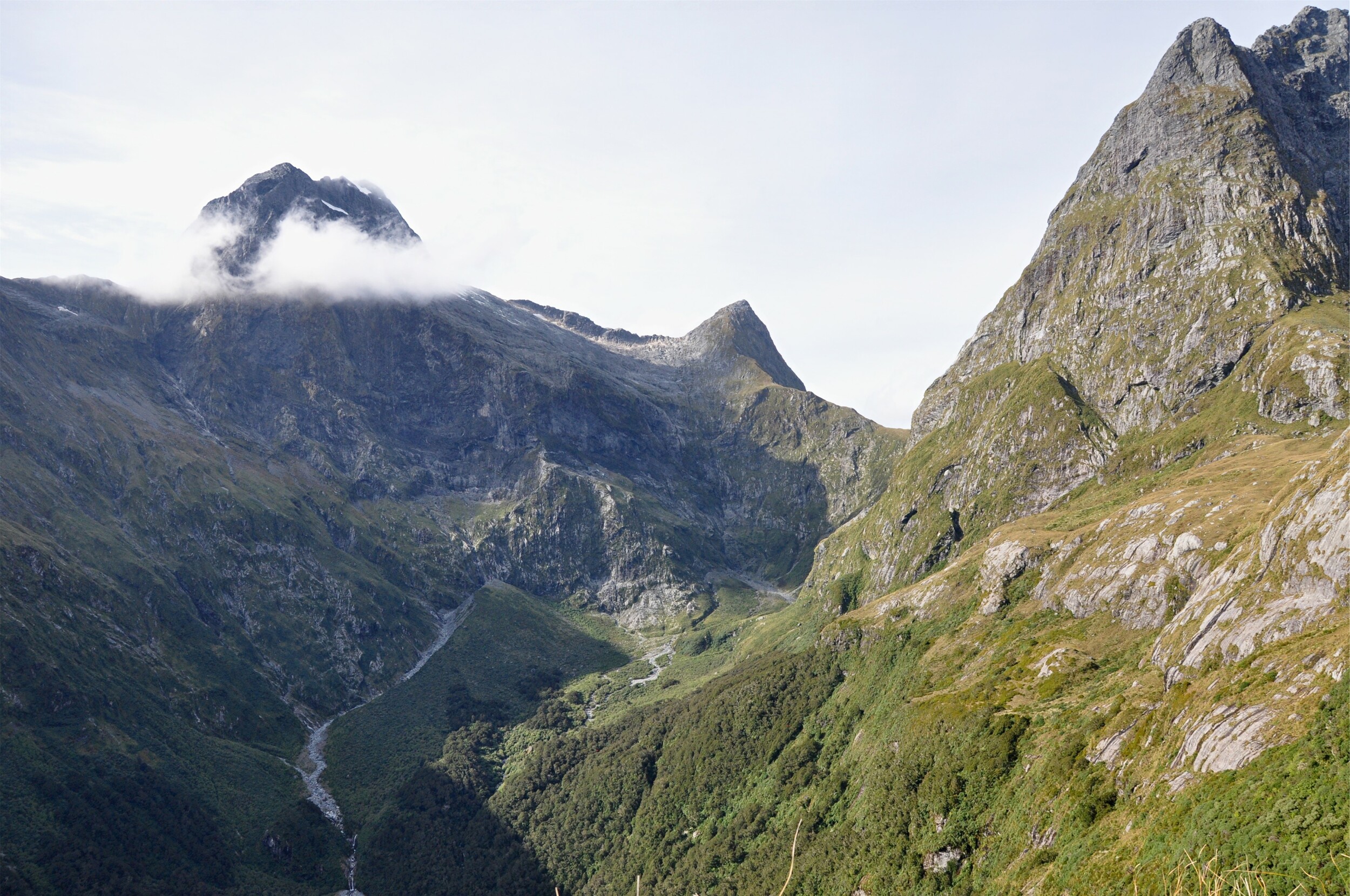
Looking out from the pass, I tried to pick out the track we would take the next day. What I didn’t realise that it would cross and in places follow the rocky gullies you can see in the photo above. The heavy rainfall meant that by the time we reached this section of track the following day on our hike, the gullies in the photo above were running with water that we had to wade through.
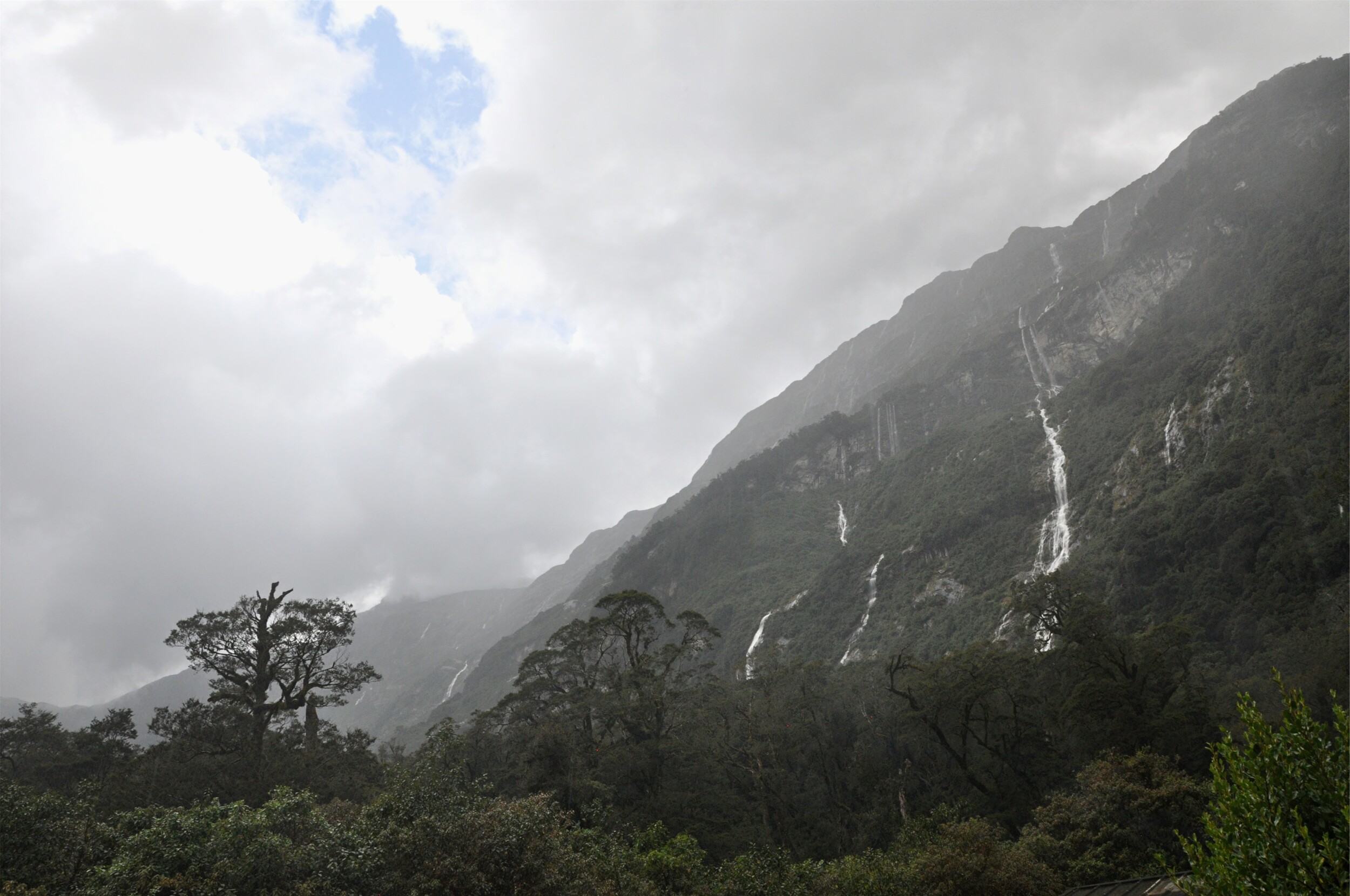
Despite the wild conditions on the top of the pass, we made it down safely to the hut and arrived in time for a late lunch. We were able to change into warm dry clothes and spread our wet tramping gear out in front of the roaring fire to dry. Knowing that we would have a warm, dry place to spend the afternoon and didn’t need to worry about packing up a wet tent certainly made the stormy conditions much more bearable. By early evening the worst of the weather had passed and the clouds would lift occasionally to give us glimpses of the water pouring off the surrounding mountains from the comfort of the hut deck.
